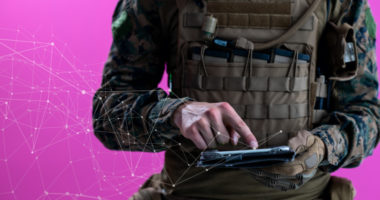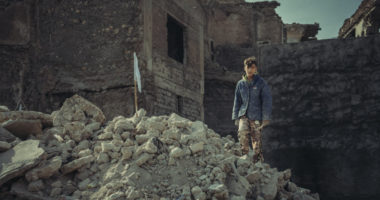I have experienced the realities of a prisoner of war camp. While serving as a military lawyer with the Royal Air Force in the UK, I was responsible for chairing what are known as Article 5 Tribunals, where the status is decided of people who have taken up arms and have ‘fallen into the hands of the enemy’. I have supported the investigation of allegations of abuse by the armed forces of a State and have published academic writing on alleged detainee abuse.
I am, therefore, well placed to comment on the need for relevant and operable international humanitarian law that reduces or removes ambiguity surrounding the treatment of prisoners of war and complements the purpose of the law of armed conflict: to limit, as much as possible, the suffering, loss and damage caused by armed conflict; to protect persons who do not take a direct part in conflict; and to facilitate the restoration of peace.
The Geneva Convention relative to the Treatment of Prisoners of War of August 12th, 1949, more commonly known as Geneva Convention III or GCIII, applies to international armed conflicts (or IAC). That is, armed conflict or war between two or more States. Such conflicts are now less common although not yet completely extinguished. Contemporary conflicts are more likely to be contested between the armed forces of a State and dissident armed forces or other organized armed groups, or between such groups. These conflicts are known as non-international armed conflicts (or NIAC). NIAC can be confusing and complex particularly with respect to identifying the objectives and allegiances of competing organized armed groups. If you then include direct or an indirect third State, such as proxy conflict, involvement into a NIAC, the situation becomes even more opaque.
International humanitarian law in respect of NIAC is limited. It can be controversial in certain areas and prone to dramatically different interpretations by some States. As a result, certain parts of the legal framework for NIAC are not applied by all. This is problematic when States are involved in a NIAC or respond to the request of the United Nations Security Council to provide forces to address international or regional security situations.
New Zealand has a proud record of contributing personnel to UN operations around the world. In some circumstances there may be ambiguity within the international community about the applicable legal regime for a given conflict. In common with other States, New Zealand’s approach is to apply certain IAC principles and standards to a NIAC in order to provide certainty of understanding. It is in this regard that the continued relevance of GCIII is most apparent and why maintaining the contemporaneity of the GCIII Commentary is so necessary.
Critics of GCIII tend to fixate upon the more anachronistic provisions of the Convention. They scoff at the continued inclusion of provisions about the payment of allowances in Swiss francs; the reference to telegrams and telegraphs; and the maintenance of a colonial class-based hierarchical structure with privileges accorded to officers to the exclusion of the other ranks. Read literally, the Convention can appear outdated. But to extrapolate the redundancy of the complete Convention from a few provisions is misguided and opportunistic. GCIII is more than just a script for another classic prisoner of war movie. It provides a structure upon which those who have fallen into the hands of the enemy can be safely and successfully confined until returned to their own country. It also provides a template to ensure respect of a prisoner’s person and their honour is accorded.
In my experience, captured persons, be they prisoners of war or detainees, are at risk of being exposed to treatment that could be considered inhumane or where an adverse distinction is made on the basis of race, colour, religion or faith, sex, birth or wealth or any other similar criteria. Such treatment is meted out as result of expediency, vengeance, or simple ignorance. In contrast, it only takes a moment to treat a captured person with a degree of kindness and respect. Typically, they are scared and vulnerable, irrespective of age or sex. To greet someone in their mother tongue and to explain why they are going to be asked a few questions demonstrates a certain empathy; rather than yelling orders and attempting to dehumanize an individual.
It was with this experience that I undertook the peer review process of the updates to the GCIII Commentary published by the International Committee of the Red Cross (ICRC) in June 2020. Batches of articles were periodically sent to me by the responsible unit within the Legal Division of the ICRC. Throughout the 18-month review process, I attempted to provide a synergy between some of the scholarly submissions and a practical application of the particular provisions of GCIII. Finding the point of consensus between those that apply GCIII and those that monitor the application remains a challenge. It is essential that all concerned collaborate where possible in order to make and sustain advances in this regard.
As a military lawyer with practical experience in the field of detention of captured persons, I believe GCIII remains the go-to international humanitarian law document, and the updated Commentary a starting point to find updated interpretations of its provisions. Seventy plus years on from its original publication there are certain aspects where it is showing its age. But in the absence of international consensus to even attempt to draft a contemporary version of the Convention, its provisions and overall intent remains principled and relevant. The secret to success is how it is applied. And the Commentary, with its updated interpretations of the Convention’s provisions, can play a role in guiding operators in their application.
Editor’s note: This article was originally published by the Australian and New Zealand Society of International Law (ANZSIL).
More posts from the GCIII Commentary blog symposium:
- Kubo Mačák, GCIII Commentary: If I can’t feed you, do I have to let you go?, October 22, 2020
- Steven Hill, Geneva Convention III Commentary: Implementing POW Convention in Multinational Operations, October 28, 2020 (published in Just Security)
- Keiichiro Okimoto, The United Nations and the Third Geneva Convention, October 26, 2020 (published in EJIL:Talk!)
- Catherine O’Rourke, Geneva Convention III Commentary: What Significance for Women’s Rights?, October 21, 2020 (published in Just Security)
- Jemma Arman, GCIII Commentary: protecting the honour of prisoners of war, September 3, 2020
- Cordula Droege, GCIII Commentary: ten essential protections for prisoners of war, July 23, 2020
- Jean-Marie Henckaerts, GCIII Commentary: ICRC unveils first update in sixty years, June 18, 2020
- Jean-Marie Henckaerts, Joint series: Locating the Geneva Conventions Commentaries in the international legal landscape, June 29, 2017






Comments